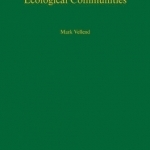The Theory of Ecological Communities
BookThis item doesn’t have any media yet
2016 | Natural World
A plethora of different theories, models, and concepts make up the field of community ecology. Amid this vast body of work, is it possible to build one general theory of ecological communities? What other scientific areas might serve as a guiding framework? As it turns out, the core focus of community ecology--understanding patterns of diversity and composition of biological variants across space and time--is shared by evolutionary biology and its very coherent conceptual framework, population genetics theory. The Theory of Ecological Communities takes this as a starting point to pull together community ecology's various perspectives into a more unified whole. Mark Vellend builds a theory of ecological communities based on four overarching processes: selection among species, drift, dispersal, and speciation. These are analogues of the four central processes in population genetics theory--selection within species, drift, gene flow, and mutation--and together they subsume almost all of the many dozens of more specific models built to describe the dynamics of communities of interacting species.
The result is a theory that allows the effects of many low-level processes, such as competition, facilitation, predation, disturbance, stress, succession, colonization, and local extinction to be understood as the underpinnings of high-level processes with widely applicable consequences for ecological communities. Reframing the numerous existing ideas in community ecology, The Theory of Ecological Communities provides a new way for thinking about biological composition and diversity.
Related Items:
| Published by | Princeton University Press |
| Edition | Unknown |
| ISBN | 9780691164847 |
| Language | N/A |
Images And Data Courtesy Of: Princeton University Press.
This content (including text, images, videos and other media) is published and used in accordance
with Fair Use.
